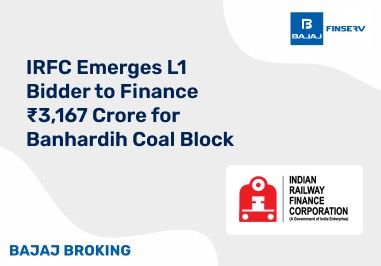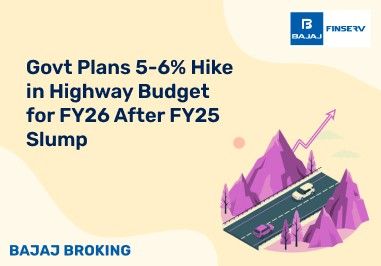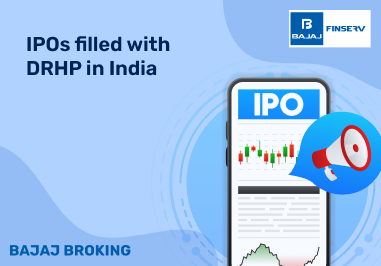BAJAJ BROKING
Laxmi Dental IPO is Open!
Open a Free Demat Account
Trade Now, Pay Later with up to 4x
Track Market Movers Instantly
World Gold Council Report: IMF Forecasts 23% Per Capita GDP Growth by 2026
Blog Summary
- 1Introduction
- 2Indian Gold Demand: Culture, Economics, and Surprising Trends
- 3 Factors Shaping Indian Gold Demand: Long-Term and Short-Term Dynamics
- 4Long-term factors
- 5Short-term Factors:
- 6Government Policies and the Impact on Gold in India
- 7India’s Jewellery Landscape: Trends, Challenges, and a Path to Modernisations
Introduction
The 2023 update of the World Gold Council’s report on India’s gold market explores shifts since 2017, examining drivers of demand, consumer perceptions, and the evolving investment landscape. Despite societal and geopolitical disruptions, India’s adaptability is highlighted. The IMF forecasts a 23% per capita GDP growth, presenting both opportunities and challenges for gold amid changing investment patterns. Gold remains resilient, and deeply embedded in Indian culture, especially during weddings and festivals. The report envisions a future where gold enhances its relevance to India’s economy, serving as adornment, a portfolio diversifier, and a hedge against inflation.
Indian Gold Demand: Culture, Economics, and Surprising Trends
Gold demand in India stems from a variety of factors, encompassing cultural ties, traditional practices, and festive exchanges. These qualitative aspects are complemented by quantitative elements, providing additional insights. The initial report, part of a series on the Indian gold market, examines demand through both quantitative analysis and qualitative exploration.
To understand gold demand comprehensively, the world gold council employs a thorough econometric analysis of long- and short-term determinants. Additionally, they scrutinise demographic, socio-economic trends, and related developments influencing present and future demand. By delving into Indian demographics and economic progress, they aim to grasp current gold demand dynamics and anticipate future trends.
Quantitatively, they utilise an econometric model, analysing three decades of annual data (1990-2020) to identify key influencers of gold demand in India. Our research unveils three primary long-term drivers: income, where a 1% rise in gross national income per capita results in a 0.9% increase in gold demand; gold price level, causing a 0.4% demand decrease for every 1% rise in the rupee-based gold price; and government levies, which affect demand differently based on whether gold is purchased as jewellery or bars/coins.
Contrary to expectations, the world gold council’s findings reveal that income has a more significant impact on demand than price. This was evident in the 2000-2010 period when demand surged by over 40%, reaching 1,000 tonnes annually, despite a 137% increase in the rupee gold price. The 77% rise in per capita income during the same period effectively countered the escalating prices.
Factors Shaping Indian Gold Demand: Long-Term and Short-Term Dynamics
Long-term factors
1. Increasing Working Age Population
- The Indian working age population is poised to grow by an average of 7 million over the next 20 years.
- Projections indicate a population of 890 million by 2041.
2. Rising Incomes
- Positive correlation between rising incomes and Indian gold demand.
- A 1% increase in income leads to a 0.9% rise in gold demand.
- Conversely, a 1% increase in gold prices results in a 0.4% decline in gold demand.
- The expanding working age population and increased labour force participation are anticipated to drive heightened gold demand.
- Cultural affinity for gold spans religions, and as urbanisation progresses, earning power rises, subsequently boosting household incomes and gold demand.
Short-term Factors:
1. Inflation
- A 1% increase in inflation triggers a 2.6% rise in gold demand.
- Globally, investors turn to gold as a hedge against inflation, and India follows suit.
2. Gold Price Changes
- A 1% increase in the gold price leads to a 1.2% decrease in gold demand.
- Notably, in the first half of 2013, despite a 20% fall in the rupee gold price, consumer demand surged by 37% year-on-year.
3. Excess Rainfall
- A 1% increase in monsoon rainfall above the long-run average results in a 0.2% boost in gold demand.
- Favourable monsoons enhance crop yields, infuse money into the rural economy, and consequently, elevate gold demand.
Government Policies and the Impact on Gold in India
India, a significant global hub for gold demand, stands out with an absence of domestic production. The correlation between rising demand and increased imports has profound implications, notably on India’s trade balance and current account. This impact was starkly evident post the Global Financial Crisis when gold imports surged, reaching Rs 2,922bn by FY 2012-13, constituting nearly 20% of total imports.
Facing a widening fiscal gap, the government implemented stringent measures, including a five-fold increase in duties on gold imports, reaching 10% in August 2013. The ’80:20′ rule, obliging gold importers to export 20% of their gold as jewellery, was introduced but later scrapped in November 2014. Import duties persisted at elevated levels, further raised to 12.5% in July 2019 as part of fiscal reforms.
Despite a reduction in Basic Customs Duty (BCD) to 7.5% in the Union Budget of 2021-22, total import duties on gold stand at 10.75%, posing implications for the gold market. Government policies have not only influenced prices but also led to consequences such as driving parts of the gold supply chain underground, with significant amounts being smuggled into the country.
Import restrictions have far-reaching effects, impacting the mainstream gold market and hindering its development. A reduction in tax rates is posited as a solution, potentially boosting overall demand for gold and creating opportunities for compliant sections of the market while squeezing out the unofficial or ‘grey’ market.
The implications extend beyond economics. High import duties have diminished India’s influence in the global gold stage, limiting the appeal of handcrafted jewellery overseas and constraining India’s role in the gold trading market. As gold imports account for a mere 7% of total imports over the past eight years, the intricate balance of policies and their consequences demands careful consideration for India’s position on the global economic stage.
India’s Jewellery Landscape: Trends, Challenges, and a Path to Modernisations
The Indian retail jewellery sector, contributing 1.3% to the GDP, is experiencing a transformative shift driven by consumer behaviour and regulatory changes. Chain stores gain momentum, securing a 35% market share by 2021, fostering competition and innovation. Financing proves challenging post-scams, impacting smaller jewellers. The manufacturing landscape, primarily handmade, sustains India’s unique market position. Mandatory hallmarking aims to level the playing field and boost demand among young consumers.
Source: https://www.gold.org/goldhub/research/indias-gold-market-reform-and-growth
Disclaimer: Investments in the securities market are subject to market risk, read all related documents carefully before investing.This content is for educational purposes only.
Share this article:
- Related Articles
- Top Articles

Gold Rate Today | 15 January 2025 | Gold Price in India
15 Jan, 2025 | 40 Min. read

Delhi Court Discharges JSW Steel in Corruption Case; HC Clears Monnet Takeover
15 Jan, 2025 | 2 Min. read

IRFC Emerges L1 Bidder to Finance ₹3,167 Crore for Banhardih Coal Block
15 Jan, 2025 | 2 Min. read

Cipla’s Tax Demand Reduced to ₹559.18 Crores After Revision
15 Jan, 2025 | 2 Min. read

Govt Plans 5-6% Hike in Highway Budget for FY26 After FY25 Slump
15 Jan, 2025 | 2 Min. read

Rikhav Securities IPO- Key Objective & Deep Analysis
15 Jan, 2025 | 5 Min. read

HCL Tech expands partnership with Microsoft to transform contact centres
14 Jan, 2025 | 2 Min. read

BEL secures new orders worth Rs 561 crore, boosting FY25 order book
14 Jan, 2025 | 2 Min. read

ITI Ltd secures Rs 64 crore contracts for Wi-Fi and CCTV systems
14 Jan, 2025 | 2 Min. read

JSW Energy secures LoI for 3.6 GW KSK Mahanadi power plant
14 Jan, 2025 | 2 Min. read

Biocon Biologics’ Johor Bahru Facility Receives FDA VAI Classification
13 Jan, 2025 | 2 Min. read

Interarch Secures ₹221 Crore Projects in Semiconductors & Energy Storage
13 Jan, 2025 | 2 Min. read

RBI Launches ULI: Transforming Loan Access
August 27, 2024 | 4 Min. read

Textile Sector in India
September 20, 2024 | 5 Min. read

List of IPOs with DRHPs Filed
November 30, 2023 | 3 Min. read

Aditya Birla Group
September 28, 2023 | 10 Min. read

Bajaj Housing Finance Ltd IPO: Things Smart Investors Need to Know
September 05, 2024 | 4 Min. read

Budget Stock Ideas 2024-2025 | Stocks to Buy Today
July 24, 2024 | 4 Min. read

IPO Eligibility Criteria : Full Details
March 15, 2024 | 6 Min. read

What Is the Lock-In Period in IPOs?
October 18, 2023 | 6 Min. read

Godfrey Phillips Announces 2:1 Bonus Shares
September 16, 2024 | 7 Min. read

Jindal Group- A Comprehensive Analysis
September 27, 2024 | 7 Min. read
Read More Blogs
Our Secure Trading Platforms
Level up your stock market experience: Download the Bajaj Broking App for effortless investing and trading



